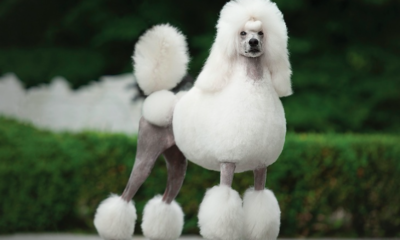Dogs
21 Dog Breeds That Resemble Bears Or Teddy Bears!
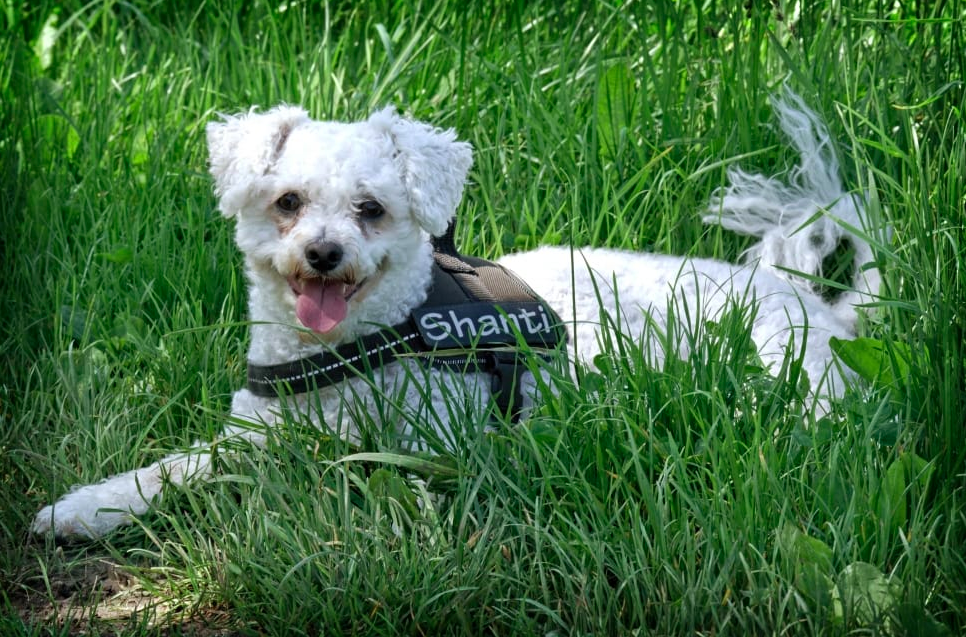
21 Dog breeds that resemble bears or teddy bears!
Have you ever dreamed of having your very own real-life teddy bear? You may even aim a little higher and want a full-sized savage beast on your hands and knees. Adopting a grizzly bear cub presents its own set of difficulties, so locating a dog that closely resembles one is the next best thing. You’ve come to the correct location, to be honest.
The complete spectrum of breeds in all shapes and sizes, all of which have those bear-like characteristics, is represented here, and we’ve included a little bit of information about each dog to help you discover the one that’s right for you.
Haircuts Can Make a Significant Difference.
For some breeds, just a small amount of grooming to achieve the actual teddy bear dog appearance is the most often requested service at my grooming store (especially among non-shedding breeds).
The Teddy Bear cut is exactly what it sounds like: it’s a cut that looks like a teddy bear. We shape the face, trim around the ears, and carve out a mane, giving your puppy the appearance of a beautiful little bear cub.
So the next time you take your dog to the groomer, inquire as to whether a teddy bear cut will be appropriate for him. Teddy Bear Dog Breeds Are Divided Into Three Sizes: Small, Medium, and Large.
1). Bichon Frise
The Bichon Frise is everything you might desire in a real-life teddy bear: cheerful, loving, and a little mischief-maker. They are fiercely clever, friendly, goofy, and cuddly creatures that are loved by all.
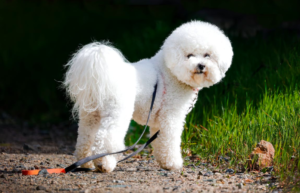
All of that silliness will have to be burned off soon, and some daily exercise will assist them in excelling and living life to the best extent possible. The Bichon is a breed that adapts well to any living situation and makes excellent apartment pets.
Keep in mind that these dogs are very sensitive to correction. They will flourish if they receive gentle teaching and are raised in a favorable atmosphere.
2). Border Terrier
The Border Terrier lives by the mantra “Work hard, play hard.” Because these dogs were originally intended to hunt foxes, they were born with instincts for running, digging, and chasing.
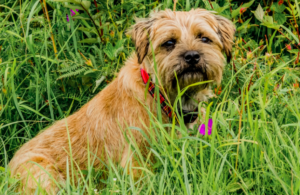
As a result, working with this breed might be a hard experience. The Border Terrier is a highly intelligent and devoted dog, but they come with a long list of requirements that not every owner is willing to meet.
They require a very busy daily lifestyle to compensate for all of their energy when hunting.
Border Terriers have enormous hearts and like being the center of attention while with their family or friends. Despite needing a tremendous deal of effort, they provide their owners with an unlimited supply of love and affection.
3). The Cockapoo
The Cockapoo is the epitome of a companion dog: affectionate, clever, and loyal to your side at all times. This is the ultimate family dog since they will never harbor any ill will against anyone or anything in the world!

Cockapoos are pure, unconditional love to the bone, and they are known for it. As a result of their desire to please their owners, they make excellent training partners and are particularly suited to first-time owners.
While they still require frequent grooming, this breed sheds very little, is quiet, and does not drool.
4). The Lhasa Apso
This renowned breed of dog was formerly used to guard the royal palaces of Tibet, and it continues to do so with distinction to this day.
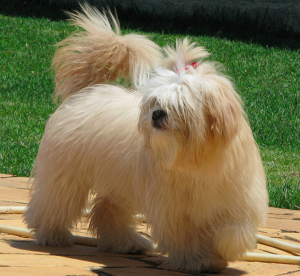
These are strong, self-sufficient canines who take their responsibility as protectors extremely seriously. So they can be quite rude to strangers while remaining strongly devoted to their own families and friends.
For this strong-willed breed, constant teaching from an authoritative figure is required before the Lhasa will listen. They are naturally protective means that they must be socialized at a young age.
5). The Pekingese
The Pekingese is a rare breed that originated in ancient China. What makes them even rarer is their coat, which can be maintained extravagantly at certain periods.
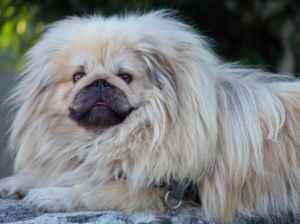
Nevertheless, with the help of a teddy bear trimmed by your groomer, this dog can be transformed into a beautiful cub.
As a result of their independent spirit, which allows them to set their own rules, the Pekingese can be extremely stubborn in training and toilet training.
In addition, they may be extremely loud and have a tendency to bark at just about everything. Because of this, the Pekingese is not an ideal dog for households with small children, other dogs, or first-time dog proprietors.
6). Pomeranian
In addition to being a sometimes overconfident troublemaker (but it’s all in good fun), the Pomeranian is also the star of their show. These Dogs can be regarded as confident, curious, and appreciative of being treated as if they were princes (or princesses).

Given their outsized personality, you’ll need to create some ground rules to ensure that they don’t feel they have complete control over the household. And they can be particularly difficult to train when it comes to toilet training and excessive barking.
These small pups make excellent companions for going on trips; they enjoy spending their days following you about and seem to genuinely appreciate new situations and situations. Keep in mind that they are heat-sensitive and require cooling downtime from time to time.
7). The Shih Tzu
In this instance, the Shih Tzu will undoubtedly benefit from displaying their trademark grooming style, known as “the teddy bear cut.” And these canines are all about strutting their stuff since they adore being the focus of everyone’s attention.
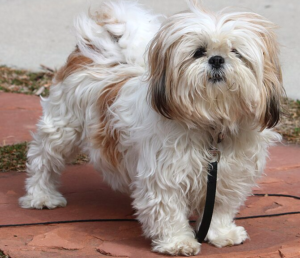
These beasts are affectionate and lively, and they would love nothing more than to spend the rest of their days with you. Shih Tzus have a natural tendency to be friendly because they were originally designed to be companion dogs.
Thus, you will not find any hunting or herding characteristics here. They can, however, be too energetic and difficult to control at times.
Some owners believe that the best way to keep their Shih Tzus happy and engaged is to adopt two of them so that they each have a companion.
8). Toy Poodle
You might not think of a poodle as the first dog that comes to mind when thinking about teddy bears, but you might be amazed at what a little grooming magic can do for them.
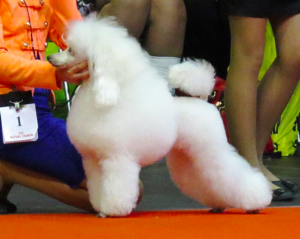
The teddy bear cut is the most requested grooming service, and it does exactly what it says on the tin. Poodle dogs are known to be one of the most intelligent dog breeds, placing them at the top of their class.
They are eager to satisfy their owners, and because they have so many brains, they are particularly ready to learn new things.
Early on, they are bursting with activity and have lots of “talking” to do. They also have a tendency to go in search of trouble by digging and running around.
They require an authoritative leader to define the norms and an outlet for the excess energy they generate regularly. They tend to become more tranquil as they mature, but they still require stimulation for their physical and mental well-being.
9). Yorkshire Terrier
Yorkies are the stars of their show, and they want to make sure that everyone is paying attention to what they’re doing. A lot of personalities are on display, and it comes with a lot of sass, which is what they are known for.
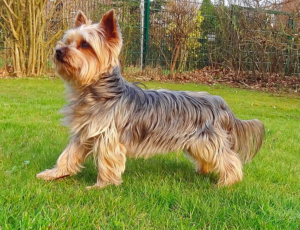
This breed was developed for the purpose of hunting rodents, and these characteristics are still extremely evident in their prey drive, which is out of this world.
Yorkies are social creatures who need friendship and demonstrate unwavering loyalty and trust for their owners. However, their owner is the only person who cares about them, and no one else is permitted to enter into that relationship at times.
These dogs can be aggressive against strangers, other pets, and even other members of the family on rare occasions. These are adorable tiny lapdogs who enjoy playing and exploring, and they are especially well-suited for singles.
As a result of their predisposition to be aggressive, these dogs are not advised for households with young children. A teddy bear trim can help your Yorkie resemble that lovely bear cub more closely, which we highly recommend.
Breeds of a Medium Size
10). Chow Chow
Chow Chows have a distinctive appearance that mimics that of a cuddly teddy bear dog, which they are. However, these dogs are considered to be anything but cuddly since they are known to have a strong sense of independence.
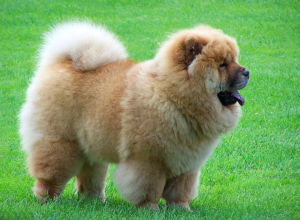
They’ll often be wary of people and other animals, and they’re known to be very protective of their young. The Chow Chow will learn to accept children and strangers if you start training and socializing him at a young age.
However, if this dog does not receive this early instruction, his patience will be severely tested. As a result, adopting an older Chow Chow is advised for older families with a history of dog ownership and training.
Chinese breeders have recently begun training Chow Chows to look like pandas, becoming a popular new trend.
11). Keeshond
The Keeshond is distinguished by its distinctive grey coat, resembling a wolf’s mane. When they’re young, they look a lot like a bear cub, with small, rounded ears and a rounded nose.

However, as they grow older, they lose some of their cub-like appearances. Spending time with his family and other loved ones is something that this dog aspires to do without fail.
Keeshonds are highly gregarious animals who cannot be left alone at any moment. That will become abundantly clear as they “Velcro” themselves to you and follow you everywhere you go.
And that thick coat needs attention as well since you’ll be taking on the role of a full-time brusher to keep the excessive amounts of shedding under control.
Keeshonds can be a mouthy breed, and even though they have the best intentions, they tend to shout and yell a lot.
12). Shiba Inu
Japan’s Shiba dogs are a unique breed with a variety of quirky characteristics and a humorous demeanor. Shibas, on the other hand, is fiercely independent, which comes with a certain element of stubbornness.
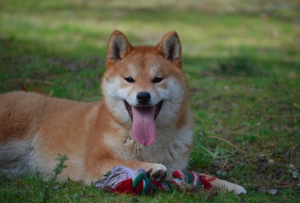
Despite the fact that they are quite bright, teaching them is a time-consuming operation that is best left to experienced owners.
These canines have a strong prey drive and a tendency to remain on the lookout all of the time. As a result, they frequently chase after small animals and bark at strangers. However, they may thrive in a family setting with the right training, socialization, and love.
Bear Dogs of a Spectacular Size
13). Akita Inu
The Akita, which was once deployed to defend royalty, has since retired from guard duties and has returned to his family.
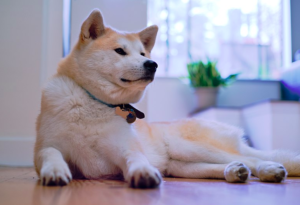
These dogs are a proud breed that has unflinching respect for their owners and loved ones, but they may also be too protective at times, especially when they are young.
Their protective instincts are still extremely strong. Akitas like conversing with one another at all hours and every day.
They use their vocal cords to make themselves known in every scenario, frequently with humorous results, somewhere in the middle of whining and barking. They tend to utilize that mouth for other things, like carrying articles or toys about with them at all times.
Because of their protective attitude and strong opinions, the Akita is difficult to teach and is not recommended for first-time dog owners. These dogs have aggressive tendencies, and it will take a lot of patience to get through them.
14). Bouvier des Flandres
The Bouvier is a robust and fearless bear, which is exactly what you’d expect from a bear of its size. Originally, they were bred for herding and farm work, and they were employed to guard and protect live animals.
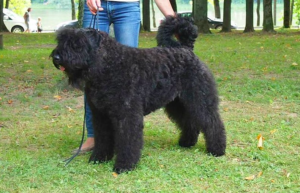
Exercise daily is definitely necessary to keep this huge guy happy. Of course, with that great height comes great confidence and a bear’s sense of belonging; they are courageous dogs who are always ready to defend the “pack” when called upon.
Owners will need to display forceful leadership in order to preserve control over who is truly in charge. Despite their “tough-guy” demeanor, they are very gentle and affectionate creatures when it comes to their family and friends.
They are excellent with youngsters but are apprehensive of strangers and other pets.
15). Caucasian Shepherd Dog
Known variously as the Ovcharka Dog or the Russian Bear, this is a large breed that can weigh more than 200 pounds at times.
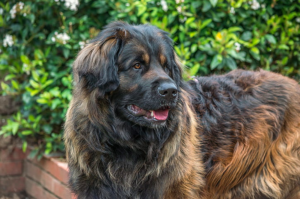
This is not surprising considering that these beasts were once utilized in the Russian military to protect livestock, and they still take their guard role very seriously.
When there is nothing to defend, these dogs will sleep for days on end and are notoriously sluggish and apathetic. On the other hand, walking and playing remain vital parts of their daily routine.
And you are correct in assuming that these are heavy-duty droolers and shedders from the look of them. To summarize, these dogs are excellent for acreages or farms, where they can roam and nap while also providing protection and receiving affection from their owners.
16). Eurasier
An unusual breed originated in Germany but is progressively rising in favor worldwide. Curious, peaceful, intellectual, and affectionate are all characteristics associated with the Eurasier.
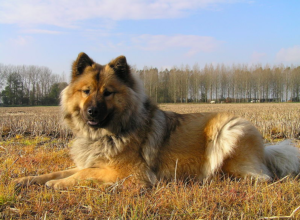
While they are rarely aggressive, they might be wary of strangers and unfamiliar canines – but early socialization can help to alleviate their shyness and apprehension.
It is not uncommon for Eurasiers to fall head over heels in love or affection with their owners, and their cheer intelligence makes them easy to train.
Not to mention that they aren’t extremely energetic, so their peaceful nature makes them a good choice for a household pet. Eurasiers, on the other hand, are big shedders; thus, that coat will require some extra attention.
17). The Great Pyrenees
Since it was first employed for herding and protection, the Great Pyrenees has continued to carry on that tradition. Although they come from a protective environment, these gentle mammals have large hearts and are capable of unconditional love.
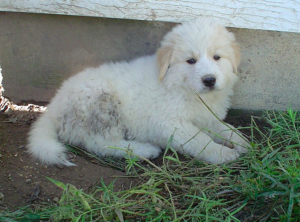
While extremely friendly, the Great Pyrenees can be wary of strangers and will feel forced to herd other dogs and little children when they are first introduced.
Their independent character makes them exceedingly tough to train, and although they hear your directives loud and clear, they will choose to disregard them.
Big barks are a trademark of these imposing figures, and they like employing them. Not to mention the fact that the shedding is out of control.
As a result of this, several unique challenges arise that most business owners find difficult to deal with. However, most of these business owners would argue that the result is well worth the effort.
18). The Newfoundland Dog
A formidable working breed for fishing boats and docks, this dog has now retired to a life of family and relaxation after a long and productive career.
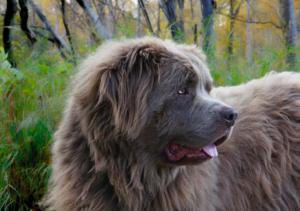
The Newfoundland are recognized for their calm attitude, but they are also famed for their bravery when an act of heroism is required.
There are numerous incredible examples of these canines rescuing children, adults, and other animals from potentially life-threatening circumstances. It should not be a surprise that they are considered to be among the most loyal and obedient dog breeds ever.
The Newfoundland is considered to be more of a family member than a canine; they naturally protect their owners’ children and exhibit tremendous loyalty and affection to those who care for them. In essence, you are adopting more than 100 pounds of love.
They are quite substantial when it comes to weight — weighing an average of 120 pounds, with males occasionally exceeding 160 pounds. And with such a thick coat comes a lot of maintenance; you’ll be brushing it every day and taking it to the groomer frequently.
19). Samoyed
The Samoyed has a beautiful white, fluffy coat that could be mistaken for a plush polar bear if you look closely. These dogs are sweet-natured and enjoy being the center of attention, and they’ll be a great addition to any household, no matter how large or small.
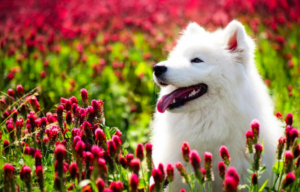
Furthermore, they are a highly intelligent breed, making training them a complete pleasure. Samoyeds, despite the fact that they are loving and intelligent, can be a handful.
These are a working breed, and they require regular runs or duties to keep their minds active and working, or they will become bored and destructive to your home and property.
And let’s not forget about its fluffy coat – Samoyed fur is a force to be reckoned with when it comes to fashion. Be prepared for an infinite quantity of shedding, brushing, and trips to the groomer.
20). St. Bernard
These are imposing canines with enormous hearts. However, be careful that they express their affection through cuddling, slobber, shedding, and not being fully conscious of their size.
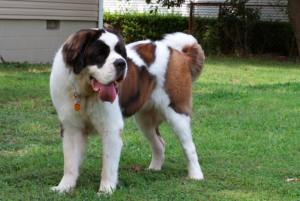
And, despite being designed for cold weather, St. Bernard’s is primarily an indoor family member. A final point to consider is that these large men may accidentally knock over items or little children in your home.
St. Bernard adoption entails adapting your lifestyle to accommodate their size (and, at times, clumsiness), which is why they are best suited for homes without children.
21). Tibetan Mastiff
If you’re seeking a bear, you’ve come to the right place. The Tibetan Mastiff, which may weigh up to 175 pounds and stand 30 inches tall, is a monstrous creature. Unsurprisingly, these Mastiffs have been utilized to protect livestock for hundreds of years.
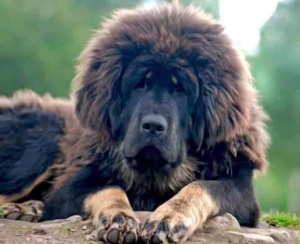
Despite its intimidating appearance, this beast has a great heart and can be extremely affectionate and cuddly with its humans. All they want to do is spend the day with their loved ones, and they’re quiet and patient in their approach.
There are certain obstacles to overcome when adopting such a large dog. Training and socialization begin at a very young age, which is absolutely necessary.
You want your mastiff to be confident in the presence of children, other pets, and strangers. However, this breed is well-known for being stubborn, and obedience isn’t usually high on their list of priorities.
We appreciate you taking the time to read!
Finally, we hope you found this article interesting? And what do you think about ‘’21 Dog breeds that resemble bears or teddy bears!?”
Please get in touch with us if you would like to contribute to this article or advertise.
And let us know if you notice something that isn’t quite right.
Dogs
How to Remove Dog Urine Stains: The Ultimate Guide to Pet Stain Removal

As any dog owner knows, accidents happen. Whether it’s a puppy still learning to potty train or an older dog with incontinence issues, dog urine stains can be a common problem in households with pets. Not only are dog pee stains unsightly, but they also carry strong odors that can linger long after the stain has dried. Fortunately, with the right knowledge and cleaning products, you can effectively remove dog urine stains and keep your home clean and fresh.
In this ultimate guide to dog pee stain removal, we’ll walk you through various methods for removing dog urine stains from different surfaces, along with tips for preventing future accidents. Whether you’re dealing with carpets, upholstery, or hardwood floors, we’ve got you covered.
1. Act Quickly: Why Timing Matters
The sooner you address a dog urine stain, the easier it will be to remove. Urine is acidic and can penetrate deep into fabrics or carpets, which can make the stain more difficult to remove if left for too long. For fresh pet stains, blot up as much liquid as possible with a clean towel or paper towels. Avoid rubbing the stain, as this can spread the urine and push it deeper into the fibers. If the stain is older, you may need to use a more powerful cleaning solution to break down the urine.
2. Use the Right Cleaning Solution
To effectively remove dog urine stains, you need the right cleaning solution. Regular household cleaners may not be enough to neutralize the odor or break down the stain, especially with stubborn dog pee stains. You’ll want a solution that not only cleans but also deodorizes.
DIY Solutions for Removing Dog Urine Stains:
- Vinegar and Baking Soda: One of the most popular DIY remedies involves a mixture of white vinegar and water. Mix one part white vinegar with one part water and pour the solution over the stained area. Let it sit for 5-10 minutes before blotting it up. Once dry, sprinkle baking soda over the area to help neutralize any lingering odors. The combination of vinegar and baking soda works well to lift the stain and tackle odors.
- Dish Soap and Hydrogen Peroxide: For tougher stains, you can create a powerful solution by mixing one tablespoon of dish soap with two cups of warm water and one tablespoon of hydrogen peroxide. Apply the solution to the stain and let it sit for about 10-15 minutes. Then, blot it up with a clean cloth. This mixture is especially effective for older stains.
Commercial Cleaners:
If you prefer a store-bought solution, there are many enzymatic cleaners specifically designed to remove dog urine stains. Enzymatic cleaners contain natural enzymes that break down the proteins in the urine, which is key to fully removing both the stain and the odor. Look for a cleaner that is safe for pets and suitable for your type of flooring or upholstery.
To use, spray the enzymatic cleaner generously over the stain, making sure to cover the entire affected area. Allow it to sit for the amount of time specified on the product label—usually about 10-15 minutes—and then blot up any excess liquid. Follow the instructions carefully to get the best results.
3. Target Different Surfaces
Dog urine stains can occur on various surfaces in your home, and each requires a slightly different treatment.
Carpets and Rugs:
Carpets are the most common victims of dog urine stains. Because carpet fibers are highly absorbent, it’s important to act quickly to avoid the urine soaking in deep. After blotting up as much liquid as possible, apply your cleaning solution and let it sit for the recommended time. Once the stain is removed, rinse the area with clean water and blot it dry. You may want to vacuum the area once it’s fully dry to restore the texture of the carpet.
For tough or older stains, consider using a steam cleaner with an appropriate cleaning solution designed for pet stains. Steam cleaning can penetrate deeper into the carpet fibers and help remove lingering odors.
Upholstery:
If your dog has had an accident on the couch or a chair, you can use the same vinegar-water solution or an enzymatic cleaner to treat the stain. Be sure to test any cleaning solution on an inconspicuous area of the fabric first to ensure it doesn’t cause discoloration or damage. When cleaning upholstery, use a minimal amount of liquid to avoid soaking the fabric. Gently blot the stain with a cloth, and allow the upholstery to air dry.
Hardwood Floors:
While dog urine can damage hardwood floors if left untreated, it’s easier to clean than carpets. First, wipe up as much liquid as possible using a dry cloth. Then, apply a mild vinegar-water solution (1 part vinegar to 3 parts water) to the stain. Wipe it up quickly and dry the area to prevent moisture from seeping into the wood. For more stubborn stains, consider using a specialized floor cleaner designed for pet stains.
Tile and Stone Floors:
Tile floors are relatively easy to clean, but urine can seep into the grout and leave a lingering odor. Use a mild soap-and-water solution to scrub the area, and for grout, you may need a grout cleaner or a mixture of baking soda and water to lift the stain. Be sure to dry the area thoroughly to prevent water damage.
4. Neutralize Odors
Even after you’ve successfully removed the stain, the odor may still linger. To completely neutralize odors, try sprinkling baking soda over the cleaned area and let it sit for several hours (or overnight). Baking soda is excellent at absorbing odors and can leave your home smelling fresh.
Alternatively, if you’re using an enzymatic cleaner, it should also help neutralize the odor as it breaks down the urine proteins.
5. Prevent Future Accidents
While cleaning up after dog urine stains is essential, prevention is always better. Here are a few tips to minimize future accidents:
- Regular Bathroom Breaks: If your dog is still in the potty training phase, be sure to take them out frequently. For adult dogs, regular walks and bathroom breaks are essential to prevent accidents indoors.
- Health Check: Sometimes, increased urination or accidents indoors can be a sign of a health issue. If your dog suddenly starts urinating indoors or seems to have trouble holding it, consult your vet.
- Protective Mats: Consider placing washable mats or furniture covers in areas where your dog spends the most time. These can help protect your floors and furniture from future accidents.
Conclusion
Removing dog urine stains and pet stains doesn’t have to be a difficult or stressful task. With the right cleaning solutions and techniques, you can successfully remove dog urine stains from carpets, upholstery, and hard surfaces. The key is to act quickly, use the right products, and follow the proper cleaning methods for each type of surface.
By keeping your home clean and odor-free, you’ll ensure a comfortable environment for both you and your furry companion.
Dogs
The Touching Story Behind Why a Dog Lays on a Particular Spot in the Yard

The Touching Story Behind Why a Dog Lays on a Particular Spot in the Yard: A Tale of Unbreakable Loyalty
Dogs are known for their incredible loyalty, but sometimes their devotion to those they love can manifest in heart-wrenching ways. This is the case with one dog whose habit of laying on a specific spot in the yard has left many people in tears. What may appear to be a simple, everyday action carries with it a deeper, heartbreaking reason that has moved dog lovers and pet owners alike.
In this article, we will delve into the emotional backstory of why this dog chooses that special spot and what it reveals about the profound bond between pets and their owners.
The Unbreakable Bond Between Humans and Dogs
Dogs have long been known as “man’s best friend.” Their unwavering loyalty and companionship can turn them into integral parts of our families. They sense our emotions, offer comfort in times of need, and provide joy and laughter. The bond between humans and dogs is unique, and for many, their pet becomes more than just an animal — they are family.
Why Do Dogs Form Such Strong Attachments?
One of the reasons dogs are so loyal is due to their pack mentality. In the wild, dogs live and hunt in packs, forming tight-knit social groups. When domesticated, they transfer this pack behavior to their human families. Dogs will go to great lengths to remain close to those they consider part of their pack, and when a member is lost, the dog often mourns deeply.
@talltaz The whole yard and he only lays on top of where we buried her 🥺😭 #petloss #grief #fyp
The Story of the Loyal Dog and the Special Spot in the Yard
In one particular case, a dog’s loyalty is demonstrated in an incredibly poignant way. After the passing of the dog’s owner, the pet began to exhibit unusual behavior — lying down on the same spot in the yard every single day. At first, the family thought it was just a comfortable place for the dog to rest, but they soon realized that the spot held a special significance.
The Meaning Behind the Spot
The spot where the dog lays is the same place where the owner used to spend time with the dog, sitting outside together, enjoying the fresh air and the sunshine. After the owner passed away, the dog returned to that spot daily, as if waiting for the person to return. The dog’s actions have been described as a form of mourning, a way of staying close to their beloved human even after they’ve gone.
How Pets Grieve the Loss of Their Owners
Just like humans, dogs can experience grief when they lose someone they love. The signs of grief in dogs can include changes in behavior, loss of appetite, and separation anxiety. In some cases, dogs may return to places that remind them of their owner, like the loyal dog who lays on that specific spot in the yard.
Signs of Grieving in Dogs
- Loss of Appetite: One of the most common signs of a grieving dog is a refusal to eat or a noticeable decrease in appetite.
- Withdrawal: A grieving dog may become less active or less interested in playing, choosing instead to lay in one place for long periods.
- Whining or Howling: Some dogs will vocalize their sadness through whines or howls, particularly when they are in a place that reminds them of their owner.
- Searching: It’s not uncommon for dogs to search the house or yard for their lost companion, wandering around or sniffing in places where their owner used to be.
The Science Behind Dogs and Grief
Research into canine behavior has shown that dogs are capable of feeling complex emotions, including grief. A study by the American Society for the Prevention of Cruelty to Animals (ASPCA) revealed that more than 60% of dogs exhibited signs of grief after the loss of a companion pet, and it’s reasonable to believe that they would react similarly after losing a human companion. The dog’s brain processes emotions in much the same way as the human brain, and they often form deep emotional bonds that are difficult to break.
How Dogs Cope With Loss
Dogs, much like humans, cope with loss in different ways. While some may exhibit signs of sadness or distress, others might become more clingy or protective of their remaining family members. Providing them with comfort, attention, and familiar routines can help them cope with their feelings of loss.
Helping a Grieving Dog
If your dog is showing signs of grief, it’s essential to provide them with support and understanding. They may need extra care and attention during this difficult time. Here are a few ways to help a grieving dog:
- Stick to a Routine: Keeping a regular routine can provide a sense of stability and security for your pet.
- Give Them Extra Attention: Spending more time with your dog, offering affection and comfort, can help ease their sadness.
- Offer Comforting Items: Items that smell like the deceased owner, such as clothing or bedding, may help the dog feel close to their lost companion.
A Dog’s Loyalty Knows No Bounds
The story of the dog lying on that specific spot in the yard is just one of many examples of how deeply dogs feel their connections to humans. It highlights the incredible loyalty that dogs have for their owners, even after death. Dogs don’t just offer companionship while we are alive; they continue to show their love and dedication long after we’re gone.
Other Heartwarming Stories of Canine Loyalty
This isn’t the only story of a dog displaying remarkable loyalty. There are countless stories of dogs who wait for their owners, return to places they once shared, or exhibit behaviors that suggest they are mourning the loss of their loved ones. One of the most famous examples is the story of Hachiko, the Japanese Akita who waited at a train station every day for nearly ten years after his owner’s death. Such stories remind us of the deep emotional lives of our pets and the bonds they form with us.
Conclusion
The heartbreaking story of the dog laying on a specific spot in the yard is a testament to the unbreakable bond between humans and their pets. It’s a reminder that dogs are not just pets; they are loyal, loving companions who feel loss and grief just as deeply as we do. For this particular dog, that spot in the yard is more than just a place to rest; it’s a symbol of the inseparable bond they shared with their owner.
Frequently Asked Questions (FAQs)
Why does my dog lay in a specific spot every day?
Dogs often return to places that have sentimental value, either due to memories they associate with the spot or because it reminds them of their owners. In some cases, a dog may lay in a particular spot because it feels safe or comforting.
Can dogs really feel grief after losing an owner?
Yes, dogs are capable of feeling grief. They can show signs of sadness, withdrawal, loss of appetite, and even changes in behavior when they lose a companion, whether it’s another pet or a human.
How can I help my grieving dog cope with the loss of a family member?
You can help your grieving dog by providing extra attention, maintaining a consistent routine, and offering comforting items like their owner’s clothing or bedding. It’s important to give them time to adjust and to provide emotional support.
How long does it take for a dog to overcome grief?
The grieving process can vary from dog to dog. While some dogs may recover within a few weeks, others may take months to adjust. It’s essential to be patient and offer them the love and care they need during this time.
Are there any other signs that a dog is grieving?
Aside from loss of appetite and withdrawal, a grieving dog may become more vocal, clingy, or exhibit behaviors like searching the house for their lost companion. Each dog grieves differently, so it’s crucial to observe their behavior and provide comfort when needed.
We appreciate you for taking the time to read this article!
Finally, we hope you found this article interesting? And what do you think about ”The Touching Story Behind Why a Dog Lays on a Particular Spot in the Yard!?”
Please feel free to share or inform your friends about this article and this site, thanks!
And let us know if you observe something that isn’t quite right.
References: Heartbreaking Reason Dog Lays on Specific Spot in Yard
Dogs
How Do Dogs Know Their Rescuers and Adopters?

How Do Dogs Know Their Rescuers and Adopters?
Dogs are often considered man’s best friend, and for good reason. Their loyalty, empathy, and innate ability to form deep connections with humans are truly remarkable. But one question that has intrigued pet lovers and researchers alike is: How do dogs recognize their rescuers and adopters?
This seemingly simple question opens up a world of complex emotional and cognitive processes that dogs undergo when they meet someone who will become an important part of their lives.
In this comprehensive exploration, we will delve into the science and emotion behind a dog’s ability to recognize and bond with their rescuers and adopters. From the impact of scent and body language to the neurological responses in a dog’s brain, we will uncover the many layers that contribute to this profound connection.
The Bond Between Humans and Dogs
A Relationship Rooted in History
The relationship between humans and dogs dates back thousands of years. Originally, dogs were domesticated from wolves, and through selective breeding, they evolved into the varied breeds we know today. This long history has led to a deep bond between the two species, with dogs becoming attuned to human emotions, behaviors, and cues.
Understanding the Human-Dog Connection
Dogs have evolved to become incredibly perceptive to human emotions. This connection is so strong that dogs can often sense when their owners are happy, sad, or anxious. This ability is due in part to the oxytocin hormone, often referred to as the “love hormone.” Both dogs and humans release oxytocin when they interact positively, strengthening their bond.
How Dogs Recognize Their Rescuers
The Role of Scent in Recognition
Dogs have an extraordinary sense of smell—up to 100,000 times more sensitive than that of humans. This acute olfactory ability allows them to pick up on a wide range of scents, including those associated with specific people. When a dog is rescued, the first thing they often do is sniff their rescuer. This initial interaction helps the dog form a scent-based memory of the person who saved them.
The Importance of Body Language
In addition to scent, dogs rely heavily on body language to interpret human intentions. A rescuer’s calm demeanor, gentle movements, and soft voice can reassure a frightened dog and help them form a positive association. Dogs are incredibly intuitive and can quickly pick up on the non-verbal cues that indicate whether a person is a friend or foe.
Voice Recognition and Emotional Tone
Dogs are also highly attuned to the tone of voice used by their rescuers. A soothing, calm voice can help alleviate a dog’s anxiety and build trust. Over time, dogs can learn to recognize their rescuer’s voice and associate it with safety and comfort.
Adoption: The Beginning of a New Bond
The First Meeting
The initial meeting between a dog and their adopter is a critical moment. During this time, the dog will use all of their senses—smell, sight, hearing, and touch—to assess the person. A successful first meeting often involves allowing the dog to approach the adopter on their own terms, giving them the space to feel safe and secure.
Building Trust Over Time
Trust is not built overnight. It takes time, patience, and consistency for a dog to fully trust their adopter. This process can be particularly challenging for dogs that have experienced trauma or neglect. However, with love and understanding, even the most fearful dogs can learn to trust again.
The Role of Routine in Bonding
Dogs thrive on routine. Establishing a consistent routine with regular feeding times, walks, and play sessions helps a dog feel secure in their new environment. This sense of security is crucial for building a strong bond between a dog and their adopter.
The Science Behind the Bond
Neurological Responses in Dogs
When a dog interacts with their rescuer or adopter, their brain undergoes several changes. Research has shown that positive interactions with humans can increase levels of oxytocin in a dog’s brain. This hormone is responsible for feelings of love and attachment, similar to the bond between a parent and child.
The Role of the Amygdala
The amygdala, a part of the brain involved in processing emotions, plays a crucial role in how dogs perceive their rescuers and adopters. This area of the brain helps dogs recognize familiar faces and respond to emotional cues, further strengthening the bond between dog and human.
Dopamine and Positive Reinforcement
Dopamine, another important neurotransmitter, is released in a dog’s brain during positive interactions with their owner. This “feel-good” chemical reinforces the bond by making the dog associate their owner with feelings of happiness and pleasure.
Emotional Intelligence in Dogs
Dogs’ Ability to Empathize
One of the most remarkable aspects of dogs is their ability to empathize with humans. Studies have shown that dogs can sense when their owner is upset and will often try to comfort them. This emotional intelligence is a key factor in the deep bond that forms between a dog and their rescuer or adopter.
Recognizing Human Emotions
Dogs can recognize and respond to human emotions through facial expressions, tone of voice, and body language. This ability to understand and react to human emotions is a result of thousands of years of co-evolution, making dogs incredibly in tune with their owners.
Challenges in Forming Bonds with Rescued Dogs
Overcoming Trauma
Many rescued dogs come from backgrounds of abuse, neglect, or abandonment. These traumatic experiences can make it difficult for them to trust humans. Patience, understanding, and professional training are often required to help these dogs overcome their past and form new bonds with their adopters.
The Role of Positive Reinforcement
Positive reinforcement is a powerful tool in helping rescued dogs build trust with their adopters. Rewarding good behavior with treats, praise, and affection can help a dog associate their adopter with positive experiences, making it easier for them to bond.
The Importance of Socialization
Socialization is key to helping rescued dogs feel comfortable in their new environment. Introducing them to new people, places, and other animals in a controlled and positive manner can help reduce anxiety and build confidence.
The Power of Love and Patience
Stories of Successful Bonds
Countless stories exist of dogs who, despite their difficult pasts, have gone on to form deep and lasting bonds with their adopters. These stories are a testament to the power of love, patience, and understanding in helping dogs heal and trust again.
The Impact of a Forever Home
For many rescued dogs, finding a forever home is a life-changing experience. The security, love, and care they receive from their adopters can help them overcome their past and live a happy, fulfilling life.
How Do Dogs Know They’ve Found Their Forever Family?
The Subtle Signs of Recognition
Dogs have a unique way of showing that they recognize and trust their adopters. Some of these signs include following their owner around the house, seeking out physical affection, and displaying relaxed body language. These subtle behaviors are a clear indication that a dog has formed a strong bond with their adopter.
The Role of Consistency and Care
Consistency in care is crucial in helping a dog feel secure in their new home. Regular feeding times, walks, and play sessions help establish a routine that dogs can rely on, making them feel safe and loved.
Understanding Your Dog’s Language
Dogs communicate their feelings in various ways, including through their body language, vocalizations, and behavior. Understanding these signals is key to building a strong, trusting relationship with your dog.
Conclusion: The Deep Connection Between Dogs and Their Rescuers
The bond between a dog and their rescuer or adopter is one of the most profound relationships in the animal kingdom. It is built on trust, love, and understanding, and is reinforced by the many ways dogs communicate and connect with their human companions.
Whether through scent, body language, or the release of oxytocin and dopamine, dogs have a unique ability to recognize and bond with the people who save them. This connection is not only a testament to the emotional intelligence of dogs but also to the deep-rooted history and co-evolution of the human-dog relationship.
Frequentions Asked Questions (FAQs)
Can dogs remember their rescuers even after many years?
Yes, dogs have excellent long-term memories, especially when it comes to people who have made a significant impact on their lives, such as rescuers. A dog’s strong sense of smell and emotional memory allow them to remember their rescuers even after a long time.
How can adopters help a dog adjust to their new home?
Adopters can help their dog adjust by establishing a consistent routine, providing plenty of positive reinforcement, and allowing the dog to explore their new environment at their own pace. Patience and understanding are key to helping a dog feel secure in their new home.
Do dogs feel gratitude towards their rescuers?
While dogs may not feel gratitude in the same way humans do, they do form strong emotional bonds with their rescuers. These bonds are often based on trust, safety, and the positive experiences shared with their rescuer.
How do dogs recognize their rescuers or adopters?
Dogs have an incredible sense of smell and memory, which helps them recognize their rescuers or adopters. They can remember the unique scent of a person, even if they haven’t seen them for a long time. Additionally, dogs are highly perceptive to body language and voice tone, which allows them to form a bond and recognize their humans through these cues.
How long does it take for a dog to bond with a new adopter?
The time it takes for a dog to bond with a new adopter can vary depending on the dog’s personality, past experiences, and the environment. Some dogs may form a bond within days, while others may take weeks or even months to fully trust and connect with their new owner. Patience, consistency, and positive reinforcement are key to building a strong bond.
Can a dog remember its rescuer after being adopted by someone else?
Yes, dogs can remember their rescuers even after being adopted by someone else. Their powerful memory, especially when it comes to emotional experiences, allows them to retain the scent, voice, and actions of those who have helped them. If a dog meets its rescuer again, it may show signs of recognition and affection.
What role does scent play in a dog recognizing its rescuer or adopter?
Scent plays a crucial role in how dogs recognize people. A dog’s sense of smell is thousands of times more sensitive than that of humans, allowing them to pick up on subtle scent cues that we can’t detect. When a dog is rescued or adopted, it memorizes the unique scent of its new human, which helps it identify and remember them later.
How can adopters help a rescue dog feel secure and loved?
To help a rescue dog feel secure and loved, adopters should provide a stable environment, consistent routines, and plenty of positive reinforcement. Spending quality time with the dog, offering treats, and giving gentle attention can help the dog feel safe. It’s also important to be patient and understanding, as rescue dogs may need time to adjust to their new surroundings and form a bond with their adopter.
We appreciate you for taking the time to read this article!
Finally, we hope you found this article interesting? And what do you think about ”How Do Dogs Know Their Rescuers and Adopters?!?”
Please feel free to share or inform your friends about this article and this site, thanks!
And let us know if you observe something that isn’t quite right.
-

 Pet Care2 years ago
Pet Care2 years agoThe Best Dog Collars For 2022
-

 Dogs2 years ago
Dogs2 years agoBichon Frise: The Happy, Playful, and Cuddly Companion
-

 Trending Pet Stories1 year ago
Trending Pet Stories1 year ago2023 ‘World’s Ugliest Dog’ Winner: Scooter’s Tale of Resilience
-

 Animals3 years ago
Animals3 years agoAre There Animals Having Down Syndrome?
-

 Pets2 years ago
Pets2 years agoThe Fascinating World Of The Red Chameleon
-

 Dogs3 years ago
Dogs3 years agoTop 10 Most Popular Dog Breeds According To AKC.
-

 Dogs2 years ago
Dogs2 years agoDogs 5 Weeks Pregnant: A Comprehensive Guide To Canine Pregnancy
-

 Dogs3 years ago
Dogs3 years agoEskimo Dogs from Canada – What Are They? – Find Out!


